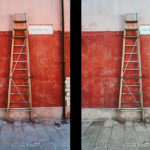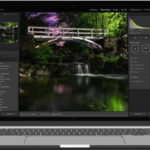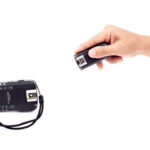Both the 35mm prime and the “nifty-fifty” are well loved for portraiture, but which should you use? In the video below, portrait photographer Julia Trotti takes us step-by-step through a number of comparative shots, each designed to show the strengths and weaknesses of the chosen two lenses.
While the 85mm is the favorite prime lens of many portrait photographers, the 50mm and 35mm can both create fabulous portraits. So much so, in fact, that deciding between them can be difficult. Both are very versatile focal lengths for many styles of photography, and both yield excellent results when taking portraits.
Most people know the 35mm prime is a good landscape or street photography lens, but it really excels at portraits as well. When compared with the 50mm, the wider focal length brings in more of the background. It also makes it easier to keep your subject in focus when they’re moving. (Trotti does a fantastic job of landing walking portraits!)
The 50mm, on the other hand, offers more compression. This often lends itself to a cleaner background, as well as less distortion.
Which should you choose? It partially comes down to what kind of portrait style you’re going for, what your friend or client needs the images for, and if you’ll be using the lenses for anything else.
Take a look at the shots Trotti comes up with and see what you think. Already decided? Which would you choose and why?
Like This Article?
Don't Miss The Next One!
Join over 100,000 photographers of all experience levels who receive our free photography tips and articles to stay current:






My goto portrat lens is an 85mm. Granted, a 50mm will be fine on an APS-c camera, but I would never go wider then that unless I was trying to get a wide (full body) shot. A 35mm distorts the image in an unflatering way if you try to get close and portraits should be close and intimate (in my opinion)
Also depends on whether one is using a cropped sensor or full-frame. On an APS-C sensor a 50mm crops to 75mm or 80mm depending on the camera and a 35mm crops to a 50mm or 56mm. For a crop sensor camera, you would need a 24mm lens to equal ~35mm and a 35 to equal ~50mm then you would have to watch for distortion, especially on the 24mm.
This is where a 24-70mm zoom coms in handy.